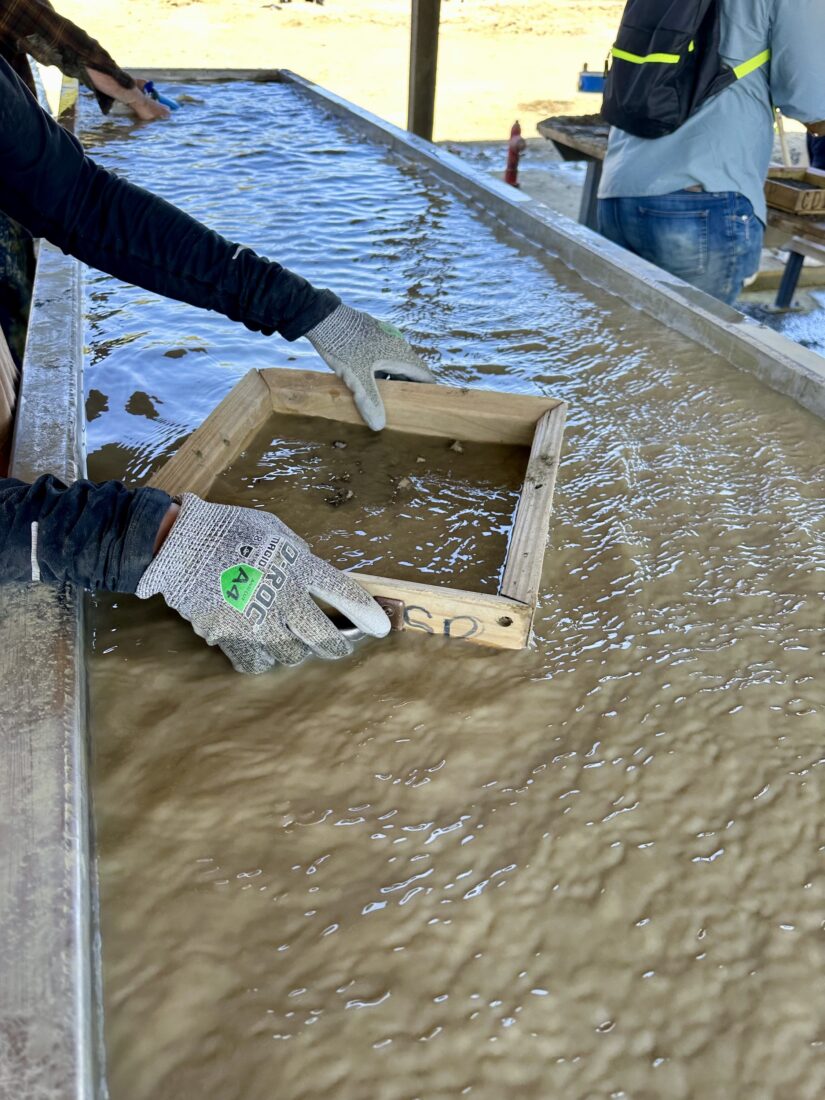
I Tried to Strike It Rich in Arkansas’s Crater of Diamonds State Park
The parking lot of Crater of Diamonds State Park in Murfreesboro, Arkansas, is enough to tell you there’s something interesting going on here. A glance around reveals Wisconsin, Colorado, Florida, Iowa, Missouri, Cherokee Nation, and Texas tags. The far-flung visitors have all converged in this tiny town for one reason: They hope to find diamonds.
On a Friday in March, I join them, tagging along with a rockhound friend who frequently digs for crystal, turquoise, and amethyst at other mineral hotspots in the state. After browsing the visitor center for a crash course in how to spot a diamond, we rent the basic prospecting equipment: a shovel, a big bucket for hauling dirt, and two square mesh sieves for sifting. Without further ado, we head into what looks like a giant field of dirt.
But first things first: Why are there diamonds in Southwest Arkansas, anyway?
The answer requires a look back 300 billion years, when diamonds formed deep in the Earth at a temperature of almost 3,000°F and a pressure 50,000 times what we experience at the surface. Fast forward to several hundred million years ago, when the continent of present-day South America collided with the southern part of North America and formed the Ouachita Mountains, jumbling that material upwards. Then, a mere hundred or so million years ago, a volcanic pipeline called the Prairie Creek Diatreme ferried them close to the surface through the movement of molten material called lamproite. At about 800 feet underground, the hot, gaseous material exploded, creating a funnel-shaped crater. Much of the mantle and crustal rocks and minerals carried in the explosion fell right back down into the crater, and the soil today still harbors all manner of things from the deep—amethyst, garnet, jasper, agate, quartz. And of course, diamonds, in glittering yellow, brown, and white.
Tools for digging.
Since opening to the public in 1972, prospectors have found and registered 35,000 diamonds in the 37.5-acre crater. That includes some real whoppers, like the 40.23-carat Uncle Sam, the largest diamond ever unearthed in the U.S.; the 16.37-carat Amarillo Starlight; and the 15.33-carat Star of Arkansas. On average, though, the finds are more to the tune of 0.2 carats—about the size of a match head—and 600 diamonds a year usually turn up. So they are most definitely out there, but as I soon find out, that doesn’t make them easy to find.
There are three basic ways to search for diamonds, and we try them all. You can “surface search,” that is, walk slowly through the plowed rows, bent over and staring at the ground like you’re looking for lost jewelry—dirt and mud don’t stick to diamonds, and their luster catches the light from all angles. I employ this method until both my eyes and back hurt, and then I try wet sifting, by which you haul gravel to troughs of water, wash away the mud, and dump your bounty on long tables and scour for a metallic gleam. Dry sifting follows the same logic, minus the water. The real pros, I see, use a saruca—a fine, round screen for resifting gravel whose concave bottom pulls the heavy material, like diamonds, to the center. (I make a mental note to rent one of those next time.)

Wet sifting.
After about five hours, I am very sunburned and my friend is still searching happily, but we are both pretty sure we had a higher chance of striking it rich if we’d stopped at the Oaklawn Casino in Hot Springs on the drive up instead. My favorite moment, aside from all the times I got tricked by little shiny pieces of quartz crystal, is watching a ten-year-old boy crawl on his hands and knees through the dirt, calling, “Here, diamonds diamonds.”
By the time the nice lady who identifies what you have found has assured me that all my crystals are in fact just crystals, I have come to terms with the fact that the only diamond I will bring home is the one on my Arkansas license plate. But I take my little collection of minerals in a small brown paper bag with me anyway—after all, they are little pieces of Arkansas, too, products of the same miracle of geology that brought me and everyone else here in the first place.










